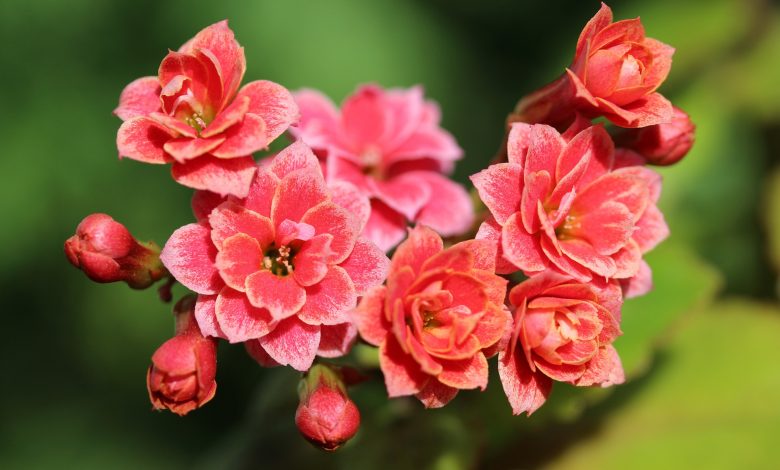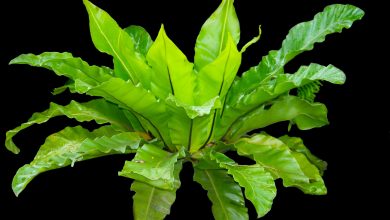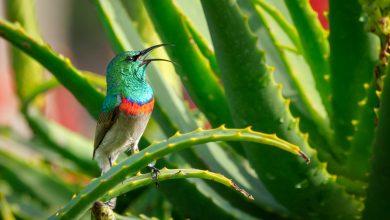Mother of Thousands: Grow the Kalanchoe Plant

One aspect of succulent plants that you quickly notice after seeing a few different species is a perfect blend of interest and ease. You may not think every variety of succulent is pleasing to the eye, but with the breadth of varieties, there is bound to be one that catches your eye. One of them could potentially be the kalanchoe plant, known as the “Mother of Thousands” for the number of tiny plant sprouts that appear on the edges of its leaves.
Also known as the Alligator Plant, Devil’s Backbone, and Mexican Hat Plant, the kalanchoe has unique characteristics when grown both indoors and out. It can also be the perfect plant for beginners, as well as for those that love to propagate their plants.
Botanical Information
Like the jade plant, the kalanchoe is a member of the flowering succulent family called Crassulaceae. The name for the family comes from “Kalan Chauhuy,” a Chinese name that means “that which falls and grows.”
- Native Habitat – The kalanchoe plant is native to South Africa and Madagascar, an island off the eastern coast of Africa. The plant mainly grows in the Tsarantanana mountains of Madagascar, which have a cooler temperate than the rest of the country.
- Flower – As a flowering pot plant, the kalanchoe is considered a biennial or triennial plant, which means that it can take two years and up to three years to reach its flowering stage. Once flowering, though, the blooms will last much longer than a typical flower. The flowers can come in a wide variety of colors and will first appear in the dead of winter with a bloom that lasts throughout spring.
- Leaves – Even when lacking flowers, the kalanchoe is a gorgeous plant due to its striking leaves. The leaves grow large and full, featuring colors of blue and green to go along with pointed tips. To understand how remarkable the kalanchoe’s leaves can become, you will have to see one in person.
- Appearance – Kalanchoe plants will grow from half a foot to a foot tall and wide with a round appearance. Flowers stand tall on stems coming from the base of the plant, as thick waxy leaves frame the flowers below.
- Hardiness Zone – If you live in hardiness zones 7 and 8, the plant will only be suitable for planting outside in June and July. For hardiness zone 9, your kalanchoe will thrive from June through September. In hardiness zones 10 and 11, the plant can survive all year long.

How to Care for Kalanchoe Plants
The “Mother of Thousands” is a breeze to grow and is perfect for beginners. Most of the care for the kalanchoe plant is based on staying out of your own way. As long as you find an area with the right amount of sunlight and plant it in the right soil, the rest should be simple.
Sunlight
Grown as an indoor plant, full sun will lead to faster growth for the kalanchoe. An area with eight to ten hours of daily sunlight is best. But if you live in a warm-weather state such as Arizona, your plant can quickly be fried if left in direct sun for too long.
Water
As a succulent, the kalanchoe plant can withstand long periods of drought. The ability to hold water so well comes from the plant’s thick leaves, which retain water and use it when necessary. For this reason, the most important aspect to remember about caring for a kalanchoe plant, or any succulent, is to not overwater it. Watering too much will cause root rot, and you will notice the signs of this as the plant begins to wither.
Soil
The soil you use for your kalanchoe plant should be moist after watering, not soggy. The contents of the soil should be light and sandy. If your soil is thick and contains too much clay, look for a sand-based or cactus soil mixture. The pH of the soil should ideally be between 5.8 and 6.3.
Fertilizer
If grown outdoors, you only need to fertilize the plant once a year with a 20-8-20 fertilizer. If you are growing indoors, though, you should fertilize the plant once a month with a mix that is meant for house plants.
Temperature
To make the kalanchoe plant flower, you must convince the plant that it’s winter in Madagascar. Climates between 40-45 degrees Fahrenheit at night with 60-degree daytime temperatures will be ideal. In order to flower, the plant will also need around 12 to 14 hours of darkness each night for at least six weeks.
Pests
The kalanchoe plant is hardy and requires little care when compared to other plants, and technically, it is considered pest resistant. However, you should still be on the lookout for certain pests.
Mealybugs are a common pest for succulents and will feed off the sap of the plant’s stem. Mealybugs are exceedingly small but are still visible, looking like little cotton swabs hiding in the joints of the plant’s stem. To prevent them, you can proactively wipe down the stem with rubbing alcohol. If caught soon enough, you can also clean them off using the same method.
Aphids are another pest that will snack on the sap from your kalanchoe plants. Aphids come in a variety of colors but can be identified by their distinguishable legs. The best way to deal with aphids is to give them a blast of your hose whenever you notice them.
Scales are the last pest to watch out for. They will appear as a waxy material that you will have to pick from the leaves with your hands.

Growing Kalanchoe Outdoors
If you live in a warm-weather climate that can handle kalanchoe plants year-round, you should take advantage of your unique opportunity. Here is a step-by-step process for growing kalanchoe plants outdoors. Many of these care tips apply to indoor growing as well.
Step 1
Find an area that gets plenty of sun and has sandy soil. If the soil needs some help, add a cactus soil mix. Make sure to dig a hole deep enough to comfortably fit the plant’s roots and put the kalanchoe in place. Fill in the areas around the plant with soil and lightly pack it down. You can also choose to plant in a pot using the same care plan.
Step 2
When the soil is completely dry, water the plant at its base and try not to get any water on the plant’s leaves. You have heard this before, but remember, the number one priority when it comes to caring for kalanchoe plants is to avoid overwatering.
Step 3
You may notice wilting or dead flowers at the stem of the plant. Trim these off as soon as you can. The quicker you remove these flowers, the quicker the plant will produce more. While the plant is in between blooms, water even less than usual.
Step 4
When the plant is newly growing, fertilize once a month or once every two weeks with half of the recommended amount of fertilizer. Once the plant is fully grown, you can limit fertilization to once a year.
If you live in an area that gets to 40 degrees Fahrenheit or below, your kalanchoe plant will die between seasons. But if temperatures remain above 40, and ideally above 55, your plant should grow and thrive with multiple blooms.
Growing Kalanchoe Indoors
Much of the care guide for growing kalanchoe outdoors applies to growing indoors. Place the kalanchoe plant in a part of the house that receives eight to ten hours of sunlight each day. The more sun the plant receives, the faster it will grow.
The most significant factor when growing kalanchoe as a house plant is picking the proper pot. Clay pots tend to work best and must have drainage holes in the bottom. To ensure the most efficient drainage, you can place the pot on a tray of small pebbles to create more room for the plant to shed water.

Getting a Second Bloom
While the “Mother of Thousands” is an attractive plant when simply in leaf form, it’s the blooms that make this plant uniquely beautiful. The kalanchoe plant only wants to bloom when it feels as though it’s winter in Madagascar.
During the months of October and early March, the days are short enough to pull off the ruse when the plant is grown outdoors. But if you are growing the plant indoors, you will have to move it to a dark room for 12-14 hours for a period of time to induce the blooms.
Popular Varieties of Kalanchoe Plants
With so many different types of kalanchoe plants available, it can be hard to know where to start. Here are some of the more popular species that you can consider for your home:
- Kalanchoe blossfeldiana – ‘Calandiva’
- Kalanchoe blossfeldiana – ‘Kerinci’
- Kalanchoe blossfeldiana – ‘Lanin’
- Kalanchoe blossfeldiana – ‘Queen Jodie’
- Kalanchoe blossfeldiana – ‘Queen Lindsay’
- Kalanchoe blossfeldiana – ‘Simone’
- Kalanchoe fedtschenkoi – ‘Variegata’
- Kalanchoe tomentosa – ‘Chocolate Soldier’
- Kalanchoe tomentosa
- Kalanchoe thyrsiflora
- Kalanchoe farinacea



